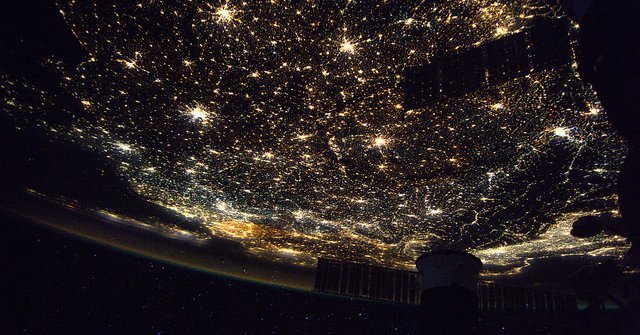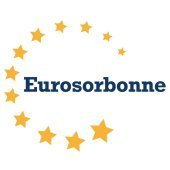“Ground control to Major Tom...” This quote is no mean way of wishing to Thomas Pesquet, a French astronaut of the ESA, the tragic fate of Major Tom, a character from David Bowie’s hit song Space Oddity, but rather a reference that should have made you smile. Since November 2016, the tenth Frenchman in space has been leading several experiences for the ESA and regularly sending breath-taking pictures of our planet on social networks.
Europe behind USA and Russia
ESA is the third space agency in the world, just behind NASA (National Aeronautics and Space Administration, USA) and Roscosmos, the Russian federal space agency. Even if NASA was created in 1955 and has never stopped growing since then, Russia had a head start thanks to the Communist regime that started to develop a space policy in the years 1920. The initially theoretical works led the Soviets to be the first to launch a satellite into orbit in 1957, to send the first human being into space (in 1961, Yuri Gagarin became the first man in space, and in 1962, Valentina Tereshkova became the first woman in space), and to lead the first Extra-Vehicular Activity (outside of the rocket or space station) in 1965. As a comparison, the European Space Agency was created in 1975, long after the first Soviet achievements or Neil Armstrong’s Moon landing in 1969.
Yet, in 1964, a coalition of ten European countries (Germany, France, the United Kingdom, the Netherlands, Italy, Belgium, Sweden, Switzerland, Spain, Denmark) decided to put in common the national space budgets, individually too low to lead in-depth research. Together, they founded the European Space Research Organisation that managed to create a small satellite that was launched into orbit by NASA.
The projects were modest and research was not progressing very well due to the diverging vision of the different countries that failed to achieve a real space policy. In that time, the United Kingdom, whose research was very advanced, Belgium, France, Germany, Italy and the Netherlands, along with Australia as an associate member, founded the European Launcher Development Organisation. The goal of this project was to build a launcher powerful enough to launch European satellites into orbit.
Unfortunately, it failed once again. The Member States decided to divide the work between them: the United Kingdom, France and Germany were asked to build one floor for the launcher each; Italy was asked to build the satellite; Belgium, the radio station; and the Netherlands was responsible for the satellite ranging station. But each launching testing was a failure because the national constructors did not work together. The Member States turned their back on the European space project in 1971.
The future of ESA: a common endeavour
In 1973, after long negotiations, European countries finally agreed upon common projects, and each one of these would be led by only one project leader – among these projects, we find the creation of Ariane on French demand. This rocket allowed the launching of European satellites into orbit. Ariane 1 was inaugurated from the Kourou base, in Guiana. Several models of this rocket, each one more sophisticated than the previous, allowed the Europeans to conquer space.
At the same time, ESA developed Spacelab, a capsule that allows the leading of experiments and that was integrated to American shuttles, and MARECS, a satellite program creating a telephone connection between the spaceships and Earth.
In the years 2000, the European Union decided to grant a substantial budget to ESA and to order big projects. Romano Prodi, who was then the president of the European Commission, had taken part in the interministerial committee meeting of ESA for the first time in November 2001. The EU and ESA had decided to create a satellite navigation and localization system.
This project was ambitious: the GPS system, created by the USA, is one such a system and has been operating in every corner of the world since 1995. Russia developed GLONASS, and China did the same with BeiDou. On 15 December 2016, after several delays and failures, the Galileo system became operational and ready to be used by everyone as long as they had the right electronic chip.
A promising and strong sector
The difference between Galileo and the concurrent systems comes in terms of quality. It is indeed much more accurate: the information is given to the meter, whereas the GPS system is accurate to ten meters. The previous statement is even truer for the Russian and Chinese systems, which were developed in haste without giving any thoughts to quality because they did not want to be dependent on the Americans.
Moreover, Galileo is much more reliable than any of its competitors: in the long run, at least one of the thirty satellites will be always visible from Earth and its signal will always be authenticable in order to ensure a better warranty of precision, a feature missing from its competitors’ list of features. But Galileo is not only a mean for the Europeans to be independent satellite-wise. In fact, it could be an interesting investment for the EU: manufacturers of cars, planes, helicopters, submarines, and ships show already a big interest in this system.
Galileo will also be compatible with connected objects and the electronics juggernauts from Silicon Valley turn to Europe for the adaptation of their future technology products and applications. Jean-Yves le Gall, the president of the French National Centre for Space Studies (CNES), estimates that the European GDP linked to satellite navigation systems (currently at about 10%) might as much as triple in size on a period of fifteen years.
The telecommunication sector has benefited from the advancements in space research: the European world market shares went from 10% to 30%. The weather systems of ESA count among the most efficient, solid and reliable in the world, and its competitors rapidly began to use them as well. Finally, the EU, ESA and the European Environment Agency are getting Copernicus, which is a software used to observe our planet in real time in order to protect it.
ESA is becoming a leader in several environmental, civilian and research aspects that are being left aside by American, Russian and Chinese juggernauts. The agency is also developing a pedagogic program meant to make the European citizens understand the necessity of investing in space research. For this purpose, seeds from mustard, radish, tomato and lentil have been dealt out to schools and to Thomas Pesquet, the goal being for the students and the astronaut to plant these seeds at the same time and to compare their growth on Earth and in space.
Rosetta, Philae and the origin of life
There was also a lot of noise around ESA during an important mission, a mission so accurate that it left the whole Earth in awe: the exploration of the comet Chury (or 67P/Churyumov–Gerasimenko). In the 1980s, when ESA managed to shoot incredible pictures of the core of Halley’s Comet, the agency planned a mission to bring information about comets to Earth.
Comets are small celestial bodies made out of ice and dust gravitating in orbit around stars and planets. Once the comets come closer to these, they develop a small atmosphere made out of gas and dust. These comets probably all come from the Oort cloud, a mass of bodies located at one light year away from the Sun, between our star and Proxima Centauri (the second closest star).
We think that water and life might have been created by comets crashing on Earth during its formation; the shock had set in motion the release of the ice their bodies were made out of, which might have cooled down and formed the oceans on our planet. Scientists have succeeded in tracing the course of Chury, discovered in 1969, since its passing near Jupiter in 1840. ESA has the grand project of analyzing the constitution of a comet. That would allow them to discover the kind of dust that constitutes its body, but ESA also wishes to analyze residues of stars and far-away planets that the comet carries on its surface.
In 2004, the space probe Rosetta was launched into space and placed itself on an orbit similar to that of Chury. In order to correctly drop a robot tasked with the analysis of the comet, the probe had to place itself at less than 30 km from it, risking a collision. Fortunately, Rosetta has ejected her lander, Philae, on 12 November 2014, after having taken some incredible pictures of Chury.
Philae then entered a seven-hour long free-fall in space before landing on the comet, only 1 km away from the planned landing zone. The lander collected data for three days before shutting down after its battery died. As the comet was slowly approaching the Sun, in June 2015, the lander turned itself on for only 85 seconds, but that was enough to send the collected data to Rosetta, that redirected it to Earth.
The European team had indeed received financial and logistical help from NASA, but all the estimations and forecasts for this project have been calculated by none other than ESA, even though juggernauts of the space sector considered these calculations as impossible to estimate. The accuracy of the estimations that allowed the launch in orbit of Rosetta ten years later and the landing of Philae on the comet proves an outstanding expertise that is being acclaimed all over the world, and this is true for several fields.



Follow the comments: |
|
